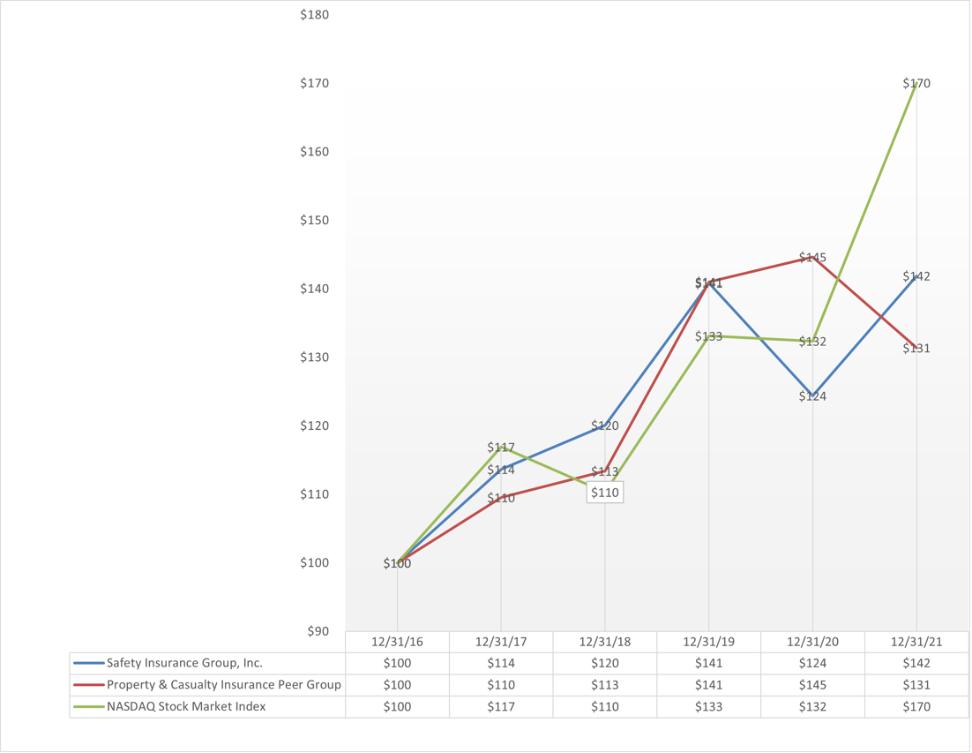Our GAAP expense ratio for the year ended December 31, 2021 decreased to 33.4% from 34.6% for the comparable 2020 period. The 2021 decrease is driven by a decrease in contingent commission expense.
Interest Expense. Interest expense was $522 and $440 for the years ended December 31, 2021 and 2020, respectively. Interest expense primarily relates to the borrowing from the FHLB as noted within Item 8 – Financial Statements and Supplementary Data, Note 10, Debt, of this Form 10-K. The credit facility commitment fee included in interest expense was $75 for each of the years ended December 31, 2021 and 2020.
Income Tax Expense Our effective tax rates were 20.4% and 20.9% for the years ended December 31, 2021 and 2020, respectively. The effective rates for the years ended December 31, 2021 and 2020 were lower than the statutory rates primarily due to the effects of tax-exempt investment income and the impact of stock-based compensation.
The comparison of results for the year ended December 31, 2020 compared to the year ended December 31, 2019 can be found in the Company’s 2020 Annual Report on Form 10-K filed with the SEC on February 26, 2021.
Liquidity and Capital Resources
As a holding company, Safety’s assets consist primarily of the stock of our direct and indirect subsidiaries. Our principal source of funds to meet our obligations and pay dividends to shareholders, therefore, is dividends and other permitted payments from our subsidiaries, principally Safety Insurance. Safety is the borrower under our credit facility.
Safety Insurance’s sources of funds primarily include premiums received, investment income and proceeds from sales and redemptions of investments. Safety Insurance’s principal uses of cash are the payment of claims, operating expenses and taxes, the purchase of investments and payment of dividends to Safety.
Net cash provided by operating activities was $141,394, $109,460, and $112,456 during the years ended December 31, 2021, 2020, and 2019, respectively. Our operations typically generate positive cash flows from operations as most premiums are received in advance of the time when claim and benefit payments are required. These positive operating cash flows are expected to continue to meet our liquidity requirements.
Net cash used for investing activities was $65,989, $35,524, and $52,964 for the years ended December 31, 2021, 2020, and 2019, respectively, as purchases of fixed maturity and equity securities exceeded proceeds from the sales, paydowns, calls and maturities of fixed maturity and equity securities.
Net cash used for financing activities was $65,571, $64,574, and $52,667 during the years ended December 31, 2021, 2020 and 2019, respectively. Net cash used for financing activities during the year ended December 31, 2021 is comprised of dividend payments to shareholders and share buybacks. Net cash used for financing activities during the year ended December 31, 2020 is comprised of dividend payments to shareholders and share buybacks, partially offset by the proceeds from a $30,000 borrowing from the FHLB-Boston on March 17, 2020. The borrowing is for a term of five years, bearing interest at a rate of 1.42%. Interest is payable monthly, and the principal is due on the maturity date of March 17, 2025 but may be prepaid in whole or in part by the Company in advance. Net cash used for financing activities during the years ended December 31, 2019 is comprised of dividend payments to shareholders.
The Insurance Subsidiaries maintain a high degree of liquidity within their respective investment portfolios in fixed maturity and short-term investments. We do not anticipate the need to sell these securities to meet the Insurance Subsidiaries cash requirements. We expect the Insurance Subsidiaries to generate sufficient operating cash to meet all short-term and long-term cash requirements. However, there can be no assurance that unforeseen business needs or other items will not occur causing us to have to sell securities before their values fully recover; thereby causing us to recognize additional impairment charges in that time period.
